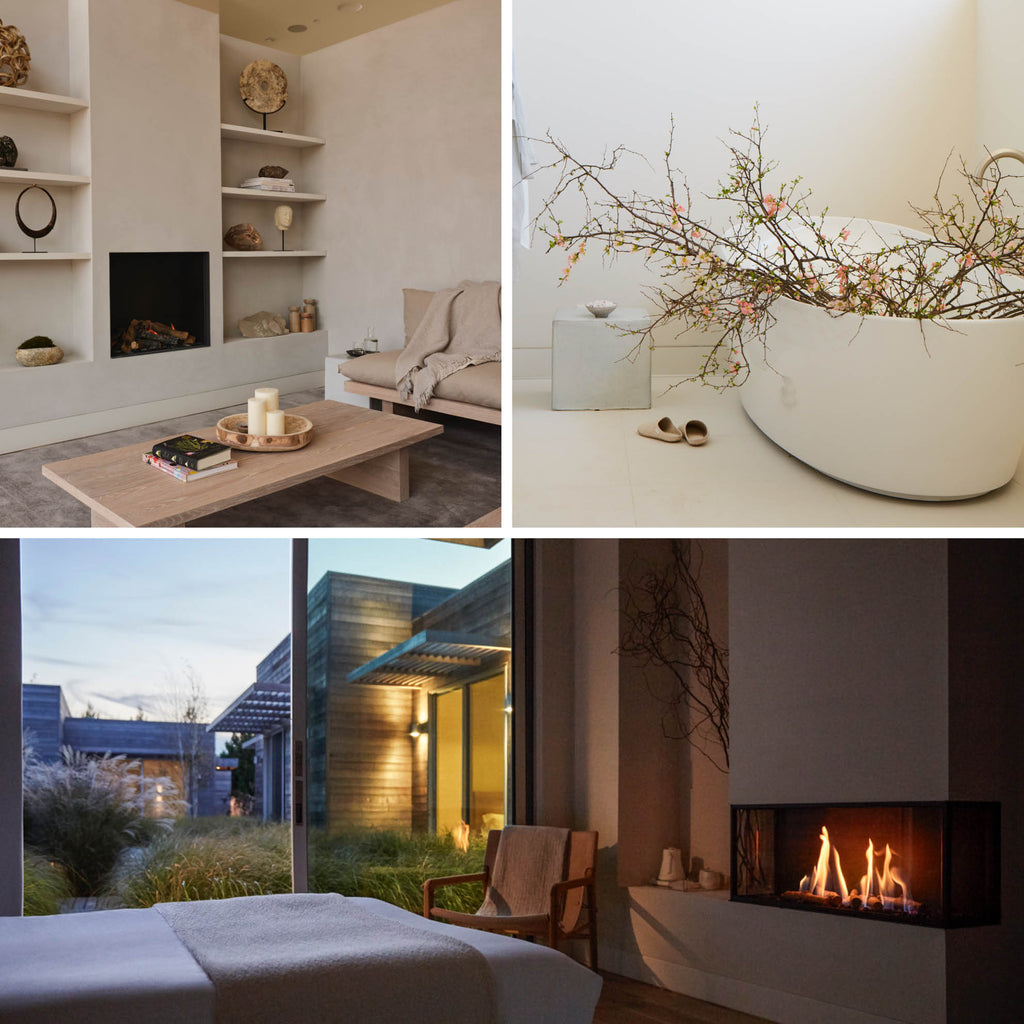FIND THE ULTIMATE UNWIND AT SHOU SUGI BAN HOUSE IN THE HAMPTONS

Shou Sugi Ban House is an otherworldly sanctuary of tranquility nestled within The Hamptons. Designed by the famed architecture firm, Herzog de Meuron, and situated in the town of Watermill, Shou Sugi Ban House’s 13 rooms are built into three pristine and private acres filled with water, nature, and wellness. The sanctuary was founded by Amy Cherry-Abitbol, a former corporate attorney who wanted to bring the principles of Wabi-Sabi and her lifelong connection to, and respect of, Japanese culture (she lived in Japan and had both her sons there) to this part of the United States she calls home.
Wabi-Sabi, at its essence, is the appreciation of the imperfect melded with a profound appreciation of nature. Within this concept lives the acceptance of transience, imperfection, and natural cycles of growth. It’s through this philosophy, combined with Cherry-Abitbol’s own considered way of living that combines minimalism with the healing properties of nature, that she formed the bedrock values of Shou Sugi Ban House.

Although Shou Sugi Ban House is Japanese by design and ideation, it is still the Hamptons by nature. Rather than raze the already-existing structures on the property, the founder honored its East End DNA and integrated its old barns and beach cottages into the design of the retreat. The results are a property that resonates purity in its design and concept without being completely displaced from the landscape of The Hamptons.
The Main Barn houses a demonstration kitchen, the Healing Arts Barn has a tea bar, while each 400 square-foot room, or studio as they’re called, is framed with floor-to-ceiling windows and built with natural materials like beds of white oak, organic mattresses and bedding, and chairs made of recycled wood. The entire property is done within a monochromatic color palette described as stone and biscuit.

The studios are situated around the saltwater pool which sits within a landscape of winding gravel pathways lined with soft, swaying grasses that snake around the property and its reflecting pools and fountains. There is deep attention paid to linear qualities in the property’s design and architecture, like the perfect placement of the wood on each studio’s facade, which is pronounced in its symmetry because of each slat’s subtle variations in color. This linear quality is also seen in the wooden walkways, which are laid in clean, straight formations and perfect 90-degree angles. There is a geometric nature to every single space.

The intention of the founder is integration; integration of fitness, nutrition, advanced skin and body care, and other healing arts including hydrotherapy and meditation. At the spa, guests can participate in treatments like a chromotherapy shower, infrared sauna, Watsu water massage, and micro-puncturing facial by Biologique Recherche. For a full 360-degree approach to wellness, Cherry-Abitbol takes as much care about what her guests put in their body as what they experience on the outside and has appointed two-time Michelin star recipient and co-founder of four-time winner of the World’s 50 best restaurants, Noma—Chef Mads Refslund— as its Executive Chef. This is to support Shou Sugi Ban House’s culinary philosophy that food is medicine.
With all these touch points and considerations, the core of Shou Sugi Ban House is a desire to inspire guests to discover the “Simplicity of Self” which can be experienced individually or through custom-created retreats and experiences.
It’s a true invitation to reset, reconsider and restore.
Images Courtesy of Shou Sugi Ban House

